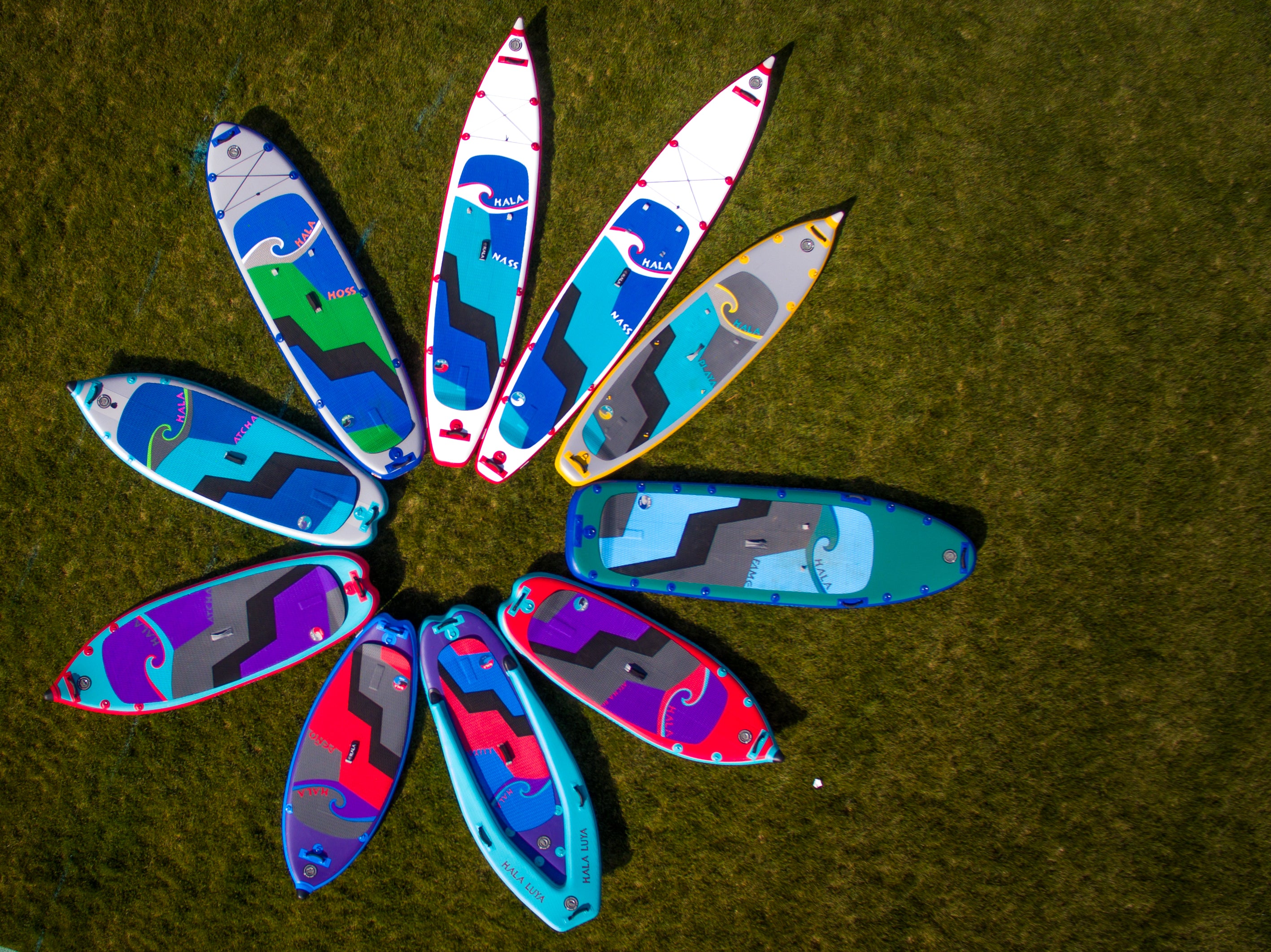
Building Your SUP Quiver
Why build a quiver?
As with any equipment-dependent sport such as SUP, skiing, or climbing, the concept of one, all-around tool is great but hardly practical once the desire to progress sets in. Just like a mechanic needs more than one wrench, the avid paddler will want to have multiple boards for a variety of water types. With the advent of high tech inflatable boards – offering unparalleled durability and performance – there are more options than ever. As overwhelming as the selection may seem, it’s incredible what every shape/dimension can offer to enhance your paddling experience.
Visualize your environment…
Your starting point is to know what type of water you’ll be paddling. The ability to roll up and travel with inflatables opens up a whole new world of water types: rivers (both flat and whitewater), lakes, and ocean surf are all easily accessible and can even share crossover between shapes. This is a key point: having a few different boards that can do dual duty will give you the most comfortable paddling range.
Find the boards to fill your vision…
The next step should be shape and size. there’s three main factors: length, width, and rocker. A big, wide board, like the Hoss, is usually stable. A narrow board, like the Nass, is usually fast, and a board with a lot of rocker, like the Atcha, tends to be very maneuverable. Keep in mind, a board can exhibit more than one of these characteristics. Width combined with rocker creates a highly responsive yet stable feel. Long length combined with a narrow profile creates speed.
Final touches…
For the final factor, Hala has made it easy. almost all the Hala boards use a very easy and interchangeable fin system. The side-bites are on a click-fin design that makes swapping them out super easy. The same fins fit multiple boards. The center fins are also interchangeable. A longer fin will create better tracking in flat water while a shorter fin is optimal for quick turns and maneuverability. Some boards do have a whitewater specific center fin called StompBox. This is a retractable design made for running very low water. This fin can be swapped with a longer 9" Stompfin.
…Putting it all together
Here’s a few examples of how this works.
EXAMPLE 1 — Fishing, Expedition, Whitewater, Touring + Racing
The Hoss is a big, very stable board that can handle a variety of situations. On flat water you can fish, accommodate a second person, or even your dog. on whitewater, it’s ideal for a bigger person wanting to run hard lines.
The Nass is a speed and touring machine that comes in two different lengths. Use it to fly across the water and use the rigging for touring expeditions.
A bigger person owning the Hoss and the Nass would have the best quiver for paddling fast with stability, while also running class IV. This quiver gives options for a variety of high-level activity in just 2 boards.
EXAMPLE 2 — Touring, Surfing, Yoga + Whitewater
The Playa has a racing/surfing "gun" shape. On flatwater, it’s perfect for touring and speed. On a river, it excels as a race board. On the ocean, it’ll catch a wave with the best of them.
The Atcha is designed mainly for river whitewater. On flat water, it’s ideal for yoga and working out.
For myself, a 5’10”175lb dude, this quiver suits me best. An Atcha and a Playa are the go-to's in my quiver, as they provide me with the ability to race, surf, and my favorite — run hard whitewater lines.
Hala’s Got Your QUIVER
Like anything in life, once you dedicate yourself to it the proper tools only enhance the experience. Fortunately, Hala has made this as easy as it can get. Condition-specific boards, unparalleled durability, and R & D like no one else all create a lineup that sets the bar for inflatable SUPs. Owning even just two boards gives a super wide range of conditions one can paddle while performing at a high level and increasing paddling skills. So, get out there and pick up that second board and begin building your quiver today.
Andy O’Brien is a team rider for Hala Gear.



Leave a comment
This site is protected by hCaptcha and the hCaptcha Privacy Policy and Terms of Service apply.